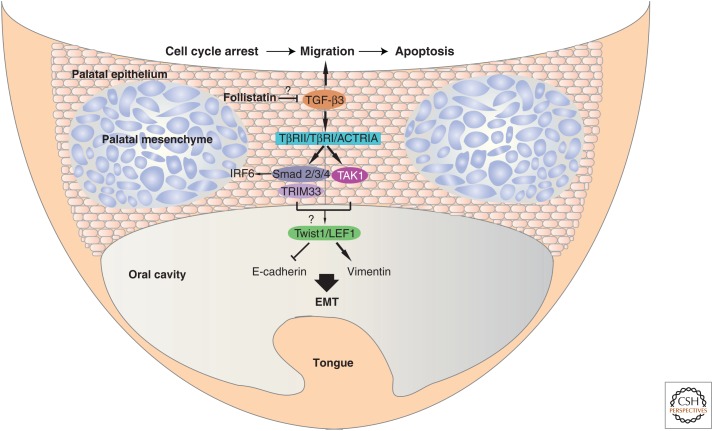Figure 3.
Molecular control of palatal development. TGF-β3 plays a crucial role in palatal development and closure. TGF-β3 signals through TβRII and TβRI receptors to stimulate the formation of Smad2–Smad3–Smad4 complexes. The ubiquitin ligase TRIM33 also participates in complexes with Smad2 and/or Smad3; cooperative actions between Smad, TRIM33, and TAK1 signaling may activate expression of the epithelial–mesenchymal transition (EMT) transcription factors Twist1 and LEF1 (note the “question mark,” as the latter mechanism is not firmly proven), which directly activate the expression of mesenchymal genes, such as the gene encoding vimentin, and suppress the expression of epithelial genes including the Cdh1 gene encoding E-cadherin during the palatal EMT. Smad complexes may also interact with IRF6 to regulate additional target genes during EMT. The possible involvement of follistatin, which may (note the “question mark”) indirectly limit TGF-β3 activity, and ActRI/ALK-2 as an alternative type I receptor, are also indicated to reflect the discussion in the main text. The sequence of events induced by TGF-β is epithelial cell cycle arrest, followed by cell migration and eventual apoptosis at the seam (top of the figure). (The image has been inspired by Bush and Jiang 2012.)

